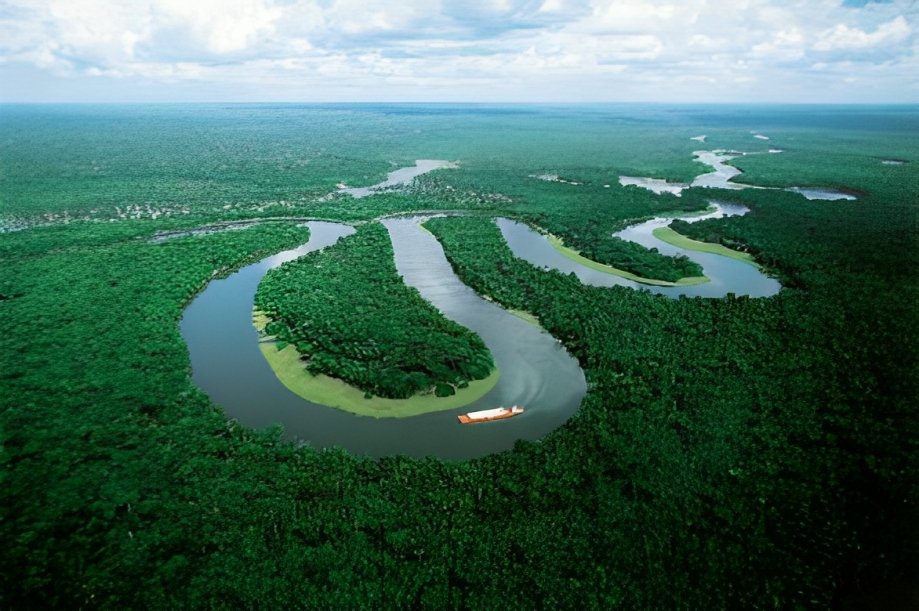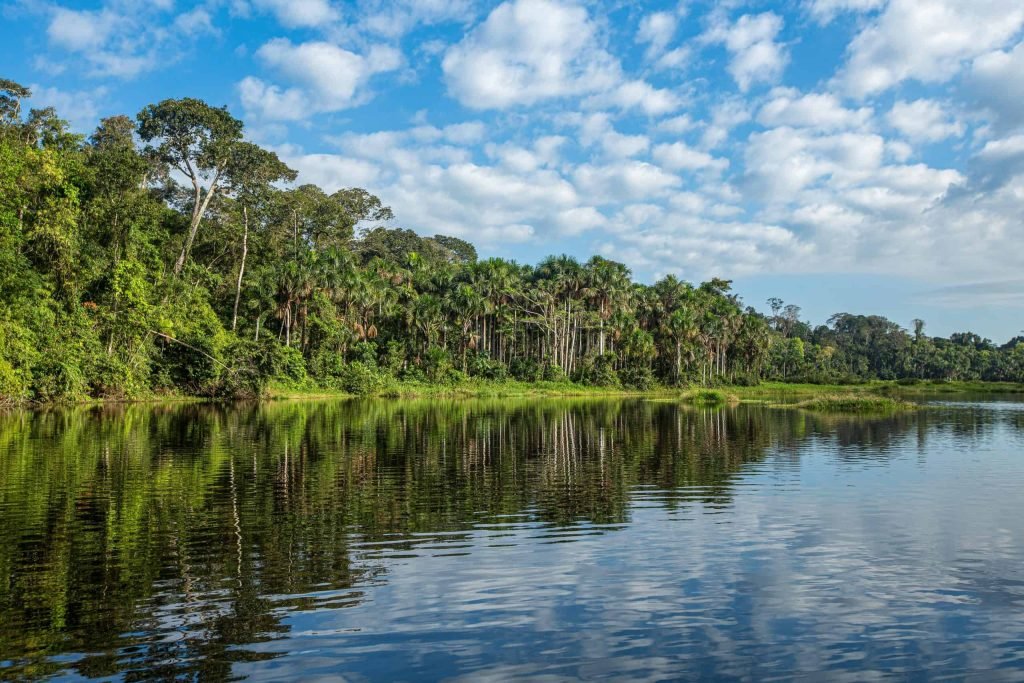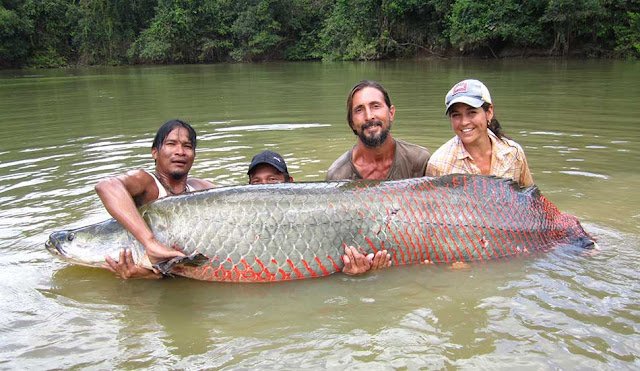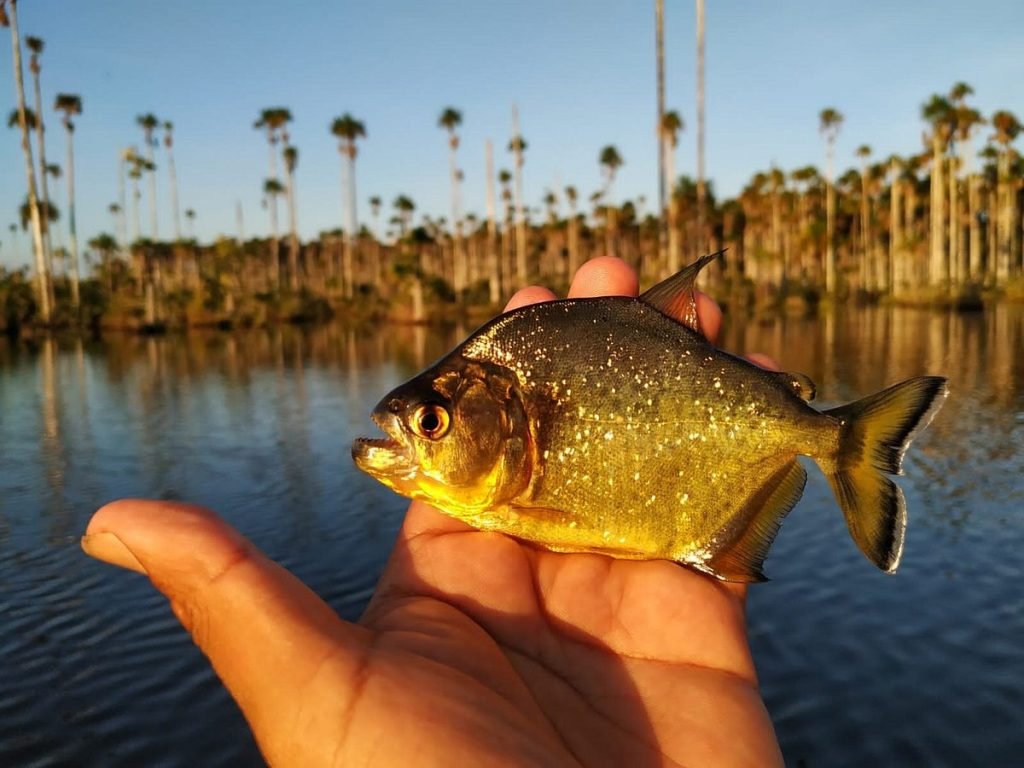The Amazonian forests that extend into southern Peru are exceptionally diverse and home to a vast number of diverse species; it is one of the most prolific areas in the world. Its vast river and wetland systems support an astounding variety of flora and fauna species. Within the Tambopata National Reserve, at least 632 species of birds, 1200 species of butterflies, 103 species of amphibians, 103 species of reptiles and 169 species of mammals have been found. In addition, the Tambopata River is home to 232 species of fish. If you are a big fan of traveling in search of animals to observe and photograph, this is one of the top destinations that will best suit your requirements. It is also full of beautiful landscapes and a vast local indigenous culture.

Very few travelers visit Tambopata and give the importance it deserves to the abundant aquatic life that develops under the waters through which they make their journey.
Based on Peruvian scientific data, some 232 species of fish are found beneath the surface of the rivers, streams and lakes throughout the Tambopata area. The area covered by the Tambopata River originates on the slopes of the eastern Andes, before flowing approximately 402 km long and emptying into the Madre de Dios River at the confluence near the city of Puerto Maldonado. The waters of the Tambopata carry a large amount of key nutrients for the proliferation of life, making it a highly productive ecosystem.
Along the river, several characteristic habitats can be found, such as pools, oxbow lakes, streams and rapids. Pozas are found mainly in the lower areas of the beaches and floodplains. They are temporary and disappear during the dry season, but in the right season, it is possible to find abundant aquatic fauna in them. Streams run through Tambopata’s forests and vary in size and characteristics. They range from large streams with deep, meandering channels, with muddy bottoms, to narrower channels surrounded by dense jungle, with clear or black water and beds of sand, mud or stone. As for oxbow lakes, these are permanent bodies of water formed from ancient meanders that have lost their connection to the river. Generally, lakes such as oxbow lakes maintain a narrow channel of connection with the river, but evolve to present a unique morphology. These bodies of water that remain when rivers change their course offer some of the best opportunities for spotting Amazonian wildlife.

This variety of aquatic ecosystem morphologies offers a wide range of habitats for different species of fish that thrive in the waters of Tambopata. Some species are distributed throughout rivers and streams, while others are exclusive to the lakes, each experience in one of these ecosystems is unique in its own way, you will not find the same species in each of them. In turn, these fish support other life forms further up the food chain, such as the giant river otter, which is currently in danger of extinction.

The largest fish found in the waters of Tambopata and the second largest freshwater fish in the world after the European beluga whale is the paiche. This giant specimen can reach more than 2.5 meters in length and weigh more than two hundred and fifty kilos. Piranhas also inhabit the waters of Tambopata. Although they are commonly associated with contemptible fish, piranhas are not at all voracious, and some species of piranhas feed mainly on vegetable matter.
Another fascinating inhabitant of Tambopata’s waterways is the tiny candiru, which, like the piranha, poses little risk to humans. You can also find electric eels in Tambopata. This species is the subject of many popular myths, such as that it is capable of producing a charge of up to 800 volts, although it is not really an eel; what we call an electric eel evolved completely independently from eels and belongs to the South American knife fish family.





